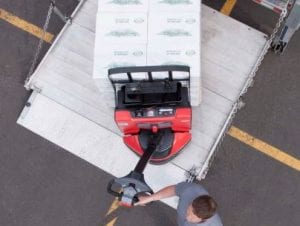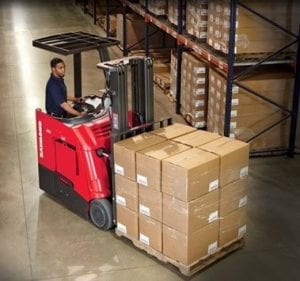The docks are an essential part of any manufacturing or distribution operation. With so much going on, it’s easy for the docks to become chaotic and difficult to maneuver, which can lead to inefficiencies. This is why it is critical in determining how a dock will operate and what equipment will be needed to maintain productivity. Considering that the goal is to move product quickly on and off the docks, these inefficiencies can lead to a loss of productivity and even docks being forced to shut down.
The key to understanding how to create a more efficient environment is knowing that no dock operates in the same manner. Because every application is different, so are the trucks required to get the job done. From loading trailers to moving inventory from dock to stock and replacing pallets, knowing which trucks are going to make the most sense for the task at hand can help relieve some of this stress and congestion.
There are a variety of trucks that our customers choose for their specific applications. A number of our customers typically use the 8210 walkie pallet truck for delivery options. These walkies can travel with the delivery truck and used to unload on-site. The 8410 walkie rider trucks are used for picking orders and for horizontal transportation. Their ability to carry anywhere from one to three pallets with a total payload of as much as 8000# makes these pallet trucks a favorite.
Some of our grocery distributors, for example, use the Raymond 4250 stand up counterbalanced forklift. They’ve grown in popularity because they require less aisle space to turn in and since the operator is standing, they facilitate the operator getting on and off the truck to perform the rest of his duties.
One of our beverage distributor customers needed to be able to quickly unload their delivery trucks and chose a 4250 model to maximize operational efficiency. This truck was the best choice for a few reasons. Because it was built as a stand up fork truck, the 4250 requires a smaller turning radius down aisles, hence quicker unloading. The improved maneuverability means less time backing up and repositioning the truck to be able to make tighter turns. Another reason they chose the stand up truck is improved visibility. In such congested areas, being able to clearly see the operator, and them being able to maneuver the docks easily, is vital. This plays a major role in reducing product and equipment damage while increasing productivity.
Raymond has set the standard by creating an innovative new line of both sit down and stand up counterbalanced forklifts and electric pallet trucks. Customers now have a one-stop shop for trucks that meet their diverse needs. These trucks allow for a smoother, more efficient operation, which, in turn, means less congestion and more productivity.
Raymond trucks have taken efficiency one step further with Eco-Performance and durable construction. Built with ductile iron, an element stronger than steel but lighter, the trucks provide more fuel efficiency, enhanced performance and a lower cost of operation.
Raymond trucks offer a multitude of innovations, one of which is the ‘lift and go’ technology on their electric pallet trucks. This technology is useful in protecting the undercarriage of pallet jacks by dramatically lowering the speed until the operator elevates the forks, minimizing the impact when driving over dock plates.
If you’re looking for a solution to control the chaos, let us demonstrate how we can lighten the load for your warehouse and dock operators without sacrificing safety standards or quality.





Leave a Reply
You must be logged in to post a comment.